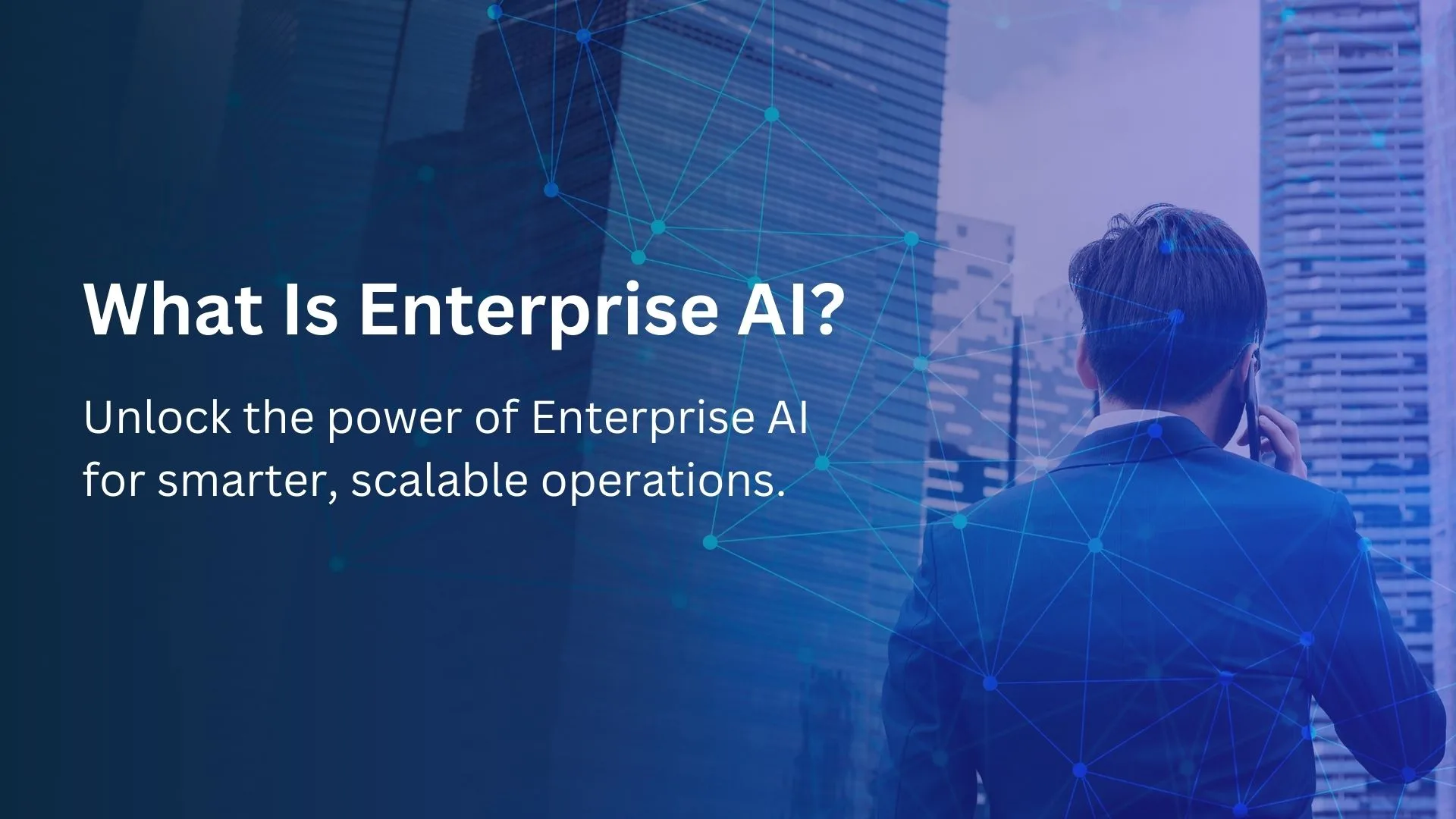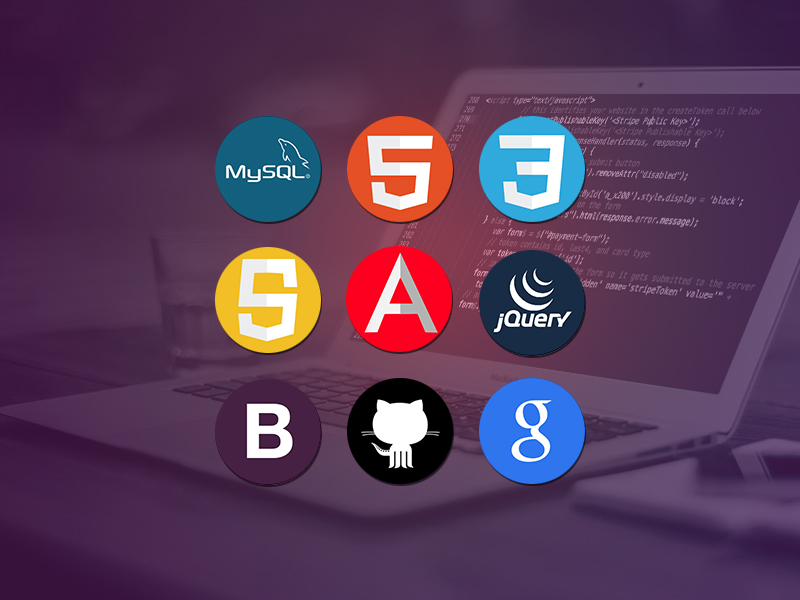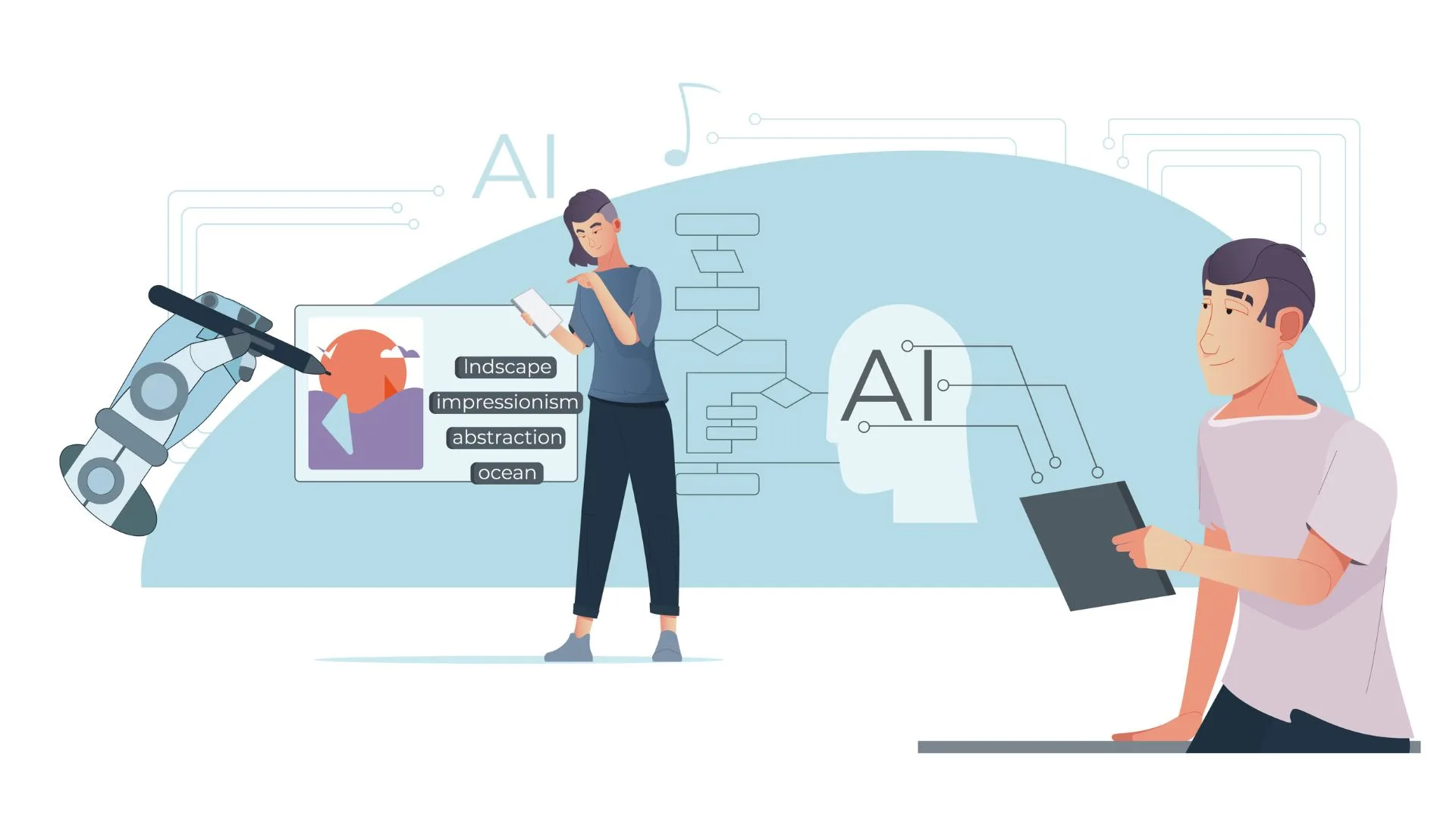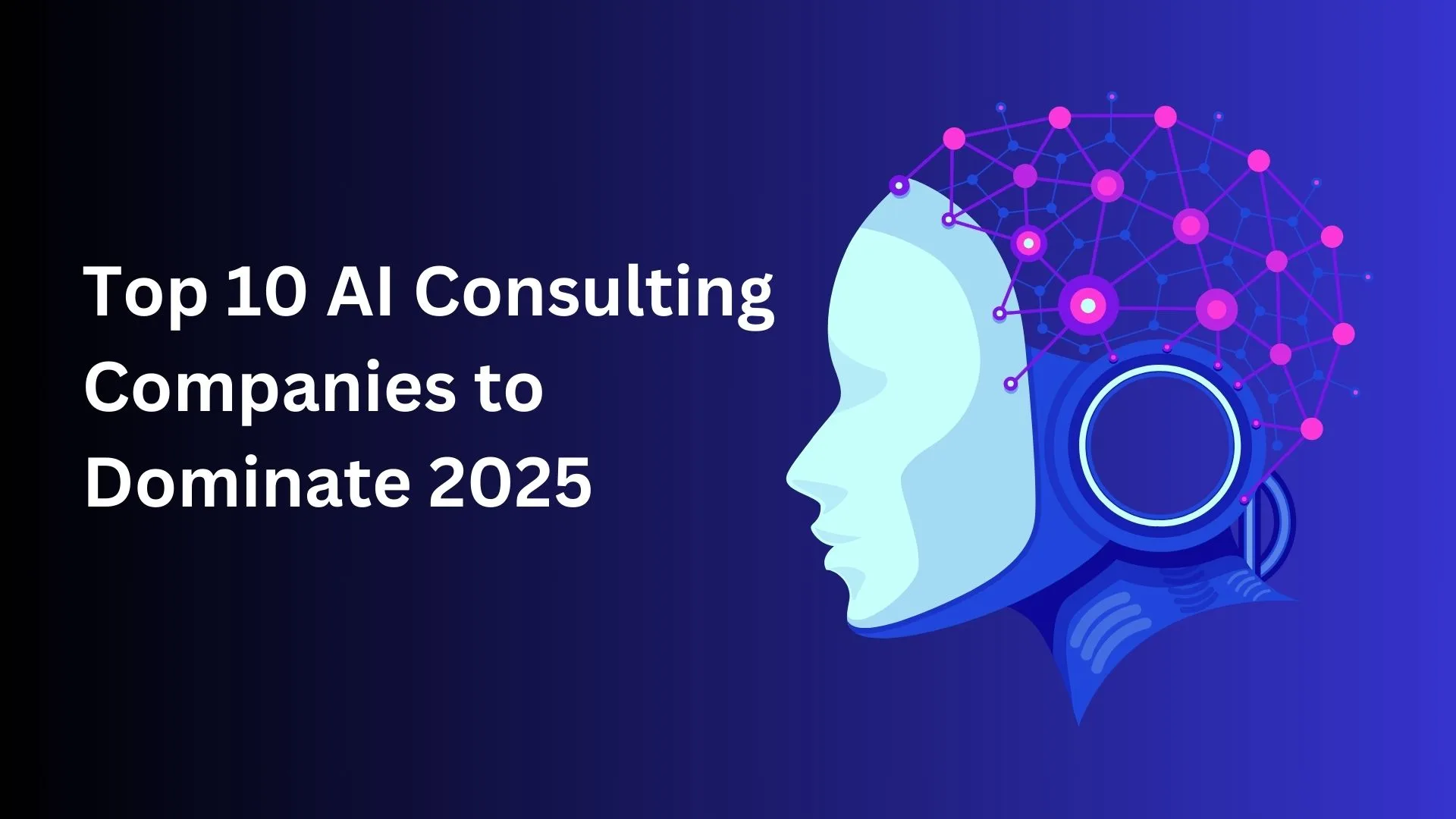What is Enterprise AI?
Enterprise AI is the application of advanced artificial intelligence technologies—like machine learning (ML), natural language processing (NLP), computer vision, and generative AI—across large organizations to solve complex business problems, automate operations, and enhance decision-making at scale.
Unlike traditional AI experiments or standalone automation tools, Enterprise AI is built for scale, security, and real-world impact. It integrates deeply with an organization’s data infrastructure and business processes to deliver measurable outcomes across departments—from marketing and HR to finance, supply chain, and customer experience.
Key Characteristics of Enterprise AI:
- Cross-functional impact: Supports multiple business units simultaneously
- Data-driven intelligence: Leverages vast volumes of structured and unstructured data
- Process automation: Handles repetitive, manual, and high-volume tasks
- Predictive capabilities: Anticipates trends and improves decision accuracy
- Compliance-ready: Includes governance, auditability, and risk management
Enterprise AI isn’t just about automation—it’s about creating a smarter, more agile business. It empowers organizations to identify growth opportunities, reduce costs, personalize customer experiences, and build resilience against market shifts.
Why Enterprise AI Matters Now More Than Ever
With growing market volatility, rising customer expectations, and increased operational complexity, organizations need more than traditional tools to stay competitive. They need intelligence that scales.
Here’s why Enterprise AI matters now more than ever:
1. Explosion of Business Data
Organizations generate massive amounts of data daily—customer interactions, supply chain logs, HR records, and more. In 2024, the total amount of data created, captured, copied, and consumed globally is forecast to reach 149 zettabytes. Enterprise AI transforms this overwhelming data into actionable insights, enabling leaders to make faster, smarter decisions.
2. Demand for Automation and Efficiency
Labor shortages, rising costs, and the pressure to do more with less make automation a top priority. AI-driven automation is projected to play a pivotal role across industries, with 85% of respondents in a 2024 survey indicating its significance. Enterprise AI automates repetitive and high-volume tasks, freeing up teams to focus on strategic work.
3. The Rise of Generative AI and LLMs
Tools like ChatGPT and enterprise-grade large language models (LLMs) are transforming business operations—from automating content creation to enhancing customer support. By late 2024, approximately 18% of financial consumer complaint text appeared to be LLM-assisted, with corporate press releases showing up to 24% LLM involvement. Enterprise AI enables companies to harness this potential securely and at scale.
4. Real-Time Decision Making
Speed is critical in areas like fraud detection, dynamic pricing, or responding to customer issues. The global real-time decision-making AI agents market is projected to grow from USD 3.6 billion in 2024 to an impressive USD 144.9 billion by 2034, reflecting a compound annual growth rate (CAGR) of 44.7%. Enterprise AI provides real-time insights that help businesses act promptly.
5. Talent and Workforce Transformation
AI isn’t replacing people—it’s augmenting human capabilities. Studies indicate that AI can enhance employee productivity significantly; for instance, workers’ throughput of realistic daily tasks increased by 66% when using AI tools, equating to 47 years of natural productivity gains in the U.S. Companies that embrace AI empower employees with AI copilots, streamline onboarding, and upskill their teams for the future.
6. Competitive Advantage
Organizations implementing AI at scale are seeing measurable gains in productivity, customer satisfaction, and innovation. Approximately 83% of companies recognize AI as a top priority in their business strategies, underscoring its role in driving competitive advantage. Delaying AI adoption now may result in falling behind industry peers.
Enterprise AI vs Traditional AI
While both Enterprise AI and Traditional AI use similar underlying technologies—like machine learning, natural language processing, and computer vision—their goals, scale, and implementation strategies are significantly different.
Traditional AI is often experimental, used for solving isolated problems or building proof-of-concepts. In contrast, Enterprise AI is designed for production at scale across departments, aligning tightly with business objectives, compliance, and ROI.
Key Differences Between Enterprise AI and Traditional AI:
| Feature | Traditional AI | Enterprise AI |
| Purpose | Research, small-scale automation, experimentation | Solving business-critical problems at scale |
| Scope | Narrow, task-specific | Cross-functional, integrated across the enterprise |
| Deployment Environment | Lab or limited production | Enterprise-grade production environments |
| Scalability | Limited scalability | Designed for massive scale and global deployment |
| Data Integration | Often siloed or small datasets | Connects across systems (ERP, CRM, HRIS, etc.) |
| Security & Compliance | Basic to moderate | Advanced with strict compliance and governance controls |
| Stakeholder Involvement | Data scientists, engineers | Business leaders, IT, compliance, domain experts |
| Support for LLMs & GenAI | Experimental or standalone | Integrated with enterprise workflows and guardrails |
| Monitoring & Governance | Minimal or manual | Automated, with audit trails and model explainability |
| Business Impact | Limited or indirect | Direct ROI, innovation acceleration, competitive edge |
Core Components of Enterprise AI
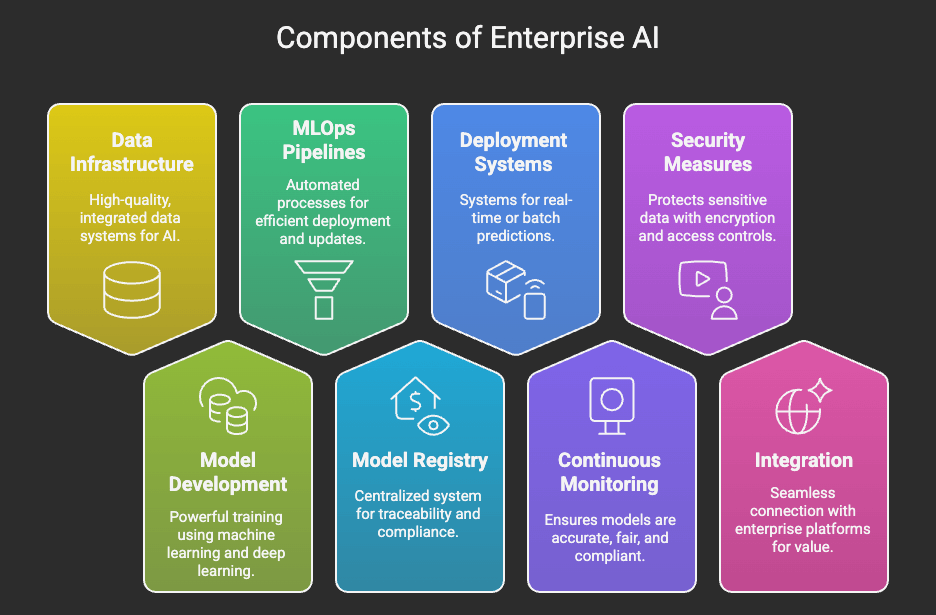
Building a successful Enterprise AI system isn’t just about having smart algorithms—it’s about having the right infrastructure, processes, and governance in place to scale AI across the organization reliably and securely.
Here are the core components that power Enterprise AI:
1. Data Infrastructure
- The foundation of any AI system is high-quality, well-organized data.
- This includes data lakes, warehouses, ETL pipelines, and tools to handle structured and unstructured data.
- Data must be integrated across systems (CRM, ERP, HRIS) and continuously updated.
2. Model Development & Training
- Models are trained using machine learning, deep learning, or large language models (LLMs) depending on the use case.
- Requires scalable compute resources, high-quality datasets, and experimentation platforms like Jupyter, Databricks, or Vertex AI.
3. MLOps / LLMOps Pipeline
- MLOps (Machine Learning Operations) and LLMOps (Large Language Model Operations) ensure models are trained, tested, deployed, and updated efficiently.
- Automates workflows, version control, testing, and rollback processes.
4. Model Registry & Lifecycle Management
- Centralized system for tracking models, versions, performance metrics, and deployment history.
- Helps ensure governance, traceability, and reproducibility—key for audits and compliance.
5. Model Deployment
- Models need to be deployed into production environments where they deliver real-time or batch predictions.
- This requires APIs, containers, Kubernetes, serverless infrastructure, or edge deployment setups.
6. Monitoring & Governance
- Continuously tracking model performance (accuracy, drift, bias).
- Includes automated alerts, dashboards, and explainability tools.
- Ensures AI systems meet ethical standards and regulatory compliance.
7. Security & Access Controls
- Role-based access, encryption, and secure handling of sensitive data and models.
- Includes audit logs and compliance controls for GDPR, HIPAA, SOC 2, etc.
8. Business Integration Layer
- AI outputs must integrate seamlessly with enterprise apps like Salesforce, SAP, ServiceNow, or Microsoft Teams.
- Often involves a middleware or API gateway to connect AI services with business workflows.
Why These Components Matter
Without these core pieces, AI projects often get stuck in silos or fail to scale. But with the right components in place, Enterprise AI becomes:
- Repeatable
- Scalable
- Secure
- ROI-driven
What is an Enterprise AI Platform?
An Enterprise AI platform is not just a set of tools—it’s a strategic enabler of business transformation.
It provides the infrastructure, intelligence, and governance that large organizations need to move AI from experimentation to execution—securely, reliably, and at scale.
Why It’s More Than Just “Tools and Models”
AI can no longer live in silos or labs. To deliver real value, it must:
- Work with real-time, enterprise-grade data
- Integrate seamlessly with existing systems (ERP, CRM, HR platforms)
- Serve multiple teams across regions
- Comply with evolving data laws and ethical standards
- Continuously learn and improve
That’s what an enterprise AI platform is built for.
The DNA of an Enterprise AI Platform
Here’s what separates a true enterprise AI platform from ad hoc solutions:
1. End-to-End AI Lifecycle Support
From data ingestion and preparation to model training, deployment, and monitoring—everything is unified in one environment.
Think: fewer handoffs, less risk, more speed to value.
2. Scalability Without Trade-Offs
Whether it’s supporting 10 models or 10,000, the platform scales compute, data pipelines, and governance without sacrificing performance.
3. Built-In MLOps and LLMOps
AI in the enterprise is not a one-time deployment. It’s an evolving system that must be retrained, monitored for drift, and governed. MLOps pipelines automate this process to keep models stable and accountable.
4. Security and Governance by Design
Enterprise AI platforms bake in role-based access, audit logs, data lineage, and compliance reporting, ensuring that AI meets regulatory and ethical standards.
5. Collaboration Across Teams
From data scientists to business analysts, the platform provides shared workspaces, dashboards, and feedback loops so that AI becomes a company-wide capability—not just a data science project.
6. Business System Integration
AI is only useful if it powers decisions. Enterprise AI platforms are designed to embed AI into business workflows—whether that’s recommending actions in Salesforce, optimizing schedules in SAP, or flagging anomalies in a financial dashboard.
Enterprise AI Platform = Intelligence at Scale
At its core, an enterprise AI platform isn’t just about enabling AI. It’s about enabling business intelligence at scale, where every decision is faster, smarter, and more data-driven.
It’s how leading companies:
- Launch AI copilots for employees
- Deploy predictive models in operations
- Automate customer interactions
- Drive product innovation
- De-risk compliance
Benefits of Enterprise AI
Enterprise AI helps large organizations go beyond basic automation—it’s about scaling intelligence, improving agility, and driving real business outcomes. Here are the core benefits:
1. Operational Efficiency
Automates repetitive tasks, reduces manual errors, and streamlines workflows across departments—freeing up teams to focus on high-impact work.
2. Faster Decision-Making
Processes massive volumes of data in real time, delivering predictive insights that help leaders act with speed and precision.
3. Cost Reduction
Cuts operational costs through process automation, resource optimization, and fewer inefficiencies—especially in areas like finance, IT, and supply chain.
4. Better Customer Experience
Powers chatbots, personalized recommendations, and faster service resolution—leading to higher satisfaction and retention.
5. Accelerated Innovation
Identifies patterns and opportunities faster than traditional R&D, helping teams launch new products and services ahead of the curve.
6. Risk Management and Compliance
Detects anomalies, flags potential fraud, and ensures ongoing compliance with data regulations—improving governance and audit readiness.
7. Empowered Workforce
Supports employees with AI-powered tools (like copilots), personalized learning, and faster onboarding—boosting productivity and engagement.
8. Strategic Agility
Enables faster adaptation to market shifts, customer needs, or supply chain disruptions—turning resilience into a competitive advantage.
Real-World Examples and Use Cases of Enterprise AI
Enterprise AI is no longer theoretical—it’s already delivering value across industries, from customer support to financial forecasting. Below are real-world examples that showcase how leading organizations are leveraging AI to drive efficiency, automation, and strategic impact.
1. Customer Service Automation
Papa John’s is using AI to enhance customer engagement through personalized push notifications, dynamic loyalty offers, and plans to roll out chatbots and voice assistant ordering to streamline the ordering experience. (Source: Reuters)
Deutsche Telekom has deployed AI to automate internal services—handling employee queries, HR leave requests, and task assignments—helping reduce administrative load and speed up internal processes. (Source: WSJ)
2. Supply Chain Optimization
Amazon leverages AI to forecast demand, optimize warehouse placements, and dynamically route deliveries in real time—resulting in significant gains in logistics efficiency and delivery speed.
Samsung SDS offers its Brightics AI platform, which processes large volumes of IoT and manufacturing data to streamline supply chain workflows and improve production accuracy. (Source: Wikipedia)
3. Fraud Detection
PayPal applies advanced machine learning to detect fraudulent behavior in real time. With models trained on billions of transactions, they proactively prevent risk without disrupting user experience.
Barclays utilizes AI to monitor transaction patterns and detect anomalies—strengthening fraud prevention and helping the bank save millions in potential losses. (Source: University of San Diego)
4. Predictive Maintenance
General Electric (GE) combines AI and IoT to monitor equipment health across industries like aviation and energy. Predictive maintenance models help prevent failures, reduce downtime, and extend asset lifespan. (Source: CIO)
Heineken implements scalable ML operations to power recommender systems and analytics across decentralized locations, enabling local teams to act on AI-generated insights. (Source: arXiv)
5. Human Resources and Talent Management
Unilever integrates AI into its hiring process by using NLP and gamified assessments to evaluate candidates—reducing time-to-hire and improving quality of hires.
Darwinbox uses generative AI to automate core HR processes, including job evaluations and onboarding tasks, allowing HR teams to focus on strategic initiatives. (Source: Microsoft Blog)
6. Financial Forecasting
JPMorgan Chase uses AWS-powered AI tools to manage and analyze vast volumes of financial data securely and at scale—enhancing both forecasting and compliance. (Source: Business Insider)
Moody’s applies multi-agent AI systems to automate complex financial analysis tasks, enabling more autonomous and comprehensive research capabilities. (Source: WSJ)
7. Cybersecurity
Tech Against Terrorism, a UN-backed initiative, uses AI to monitor and disrupt terrorist content online by analyzing massive datasets in real time to flag harmful behavior. (Source: The Times)
UiPath is evolving from traditional RPA to agentic AI—combining rule-based automation with intelligent, decision-making systems to enhance enterprise security and process automation. (Source: The Verge)
8. Marketing and Sales
eBay integrates AI into its development and marketing workflows to generate personalized content, improve code generation, and optimize customer engagement. (Source: WSJ)
Yellow.ai provides enterprise-grade conversational AI solutions—including chatbots and voice assistants—that power customer support for major brands like Sony and Domino’s. (Source: Wikipedia)
Key Use Cases of Enterprise AI
🔬 Research and Development (R&D)
- Accelerate product development through AI-driven simulations and data analysis
- Identify market trends and customer needs using natural language processing
- Automate patent research and scientific literature reviews
- Predict R&D outcomes and reduce trial-and-error cycles
🏗️ Asset Management
- Monitor asset performance in real time using IoT + AI analytics
- Enable predictive maintenance to reduce equipment downtime
- Optimize asset utilization and lifecycle planning
- Automate inventory audits and asset tracking
📞 Customer Service
- Deploy AI-powered chatbots and virtual assistants for 24/7 support
- Use NLP for automated query classification and routing
- Personalize responses and recommendations in real time
- Analyze sentiment and feedback to improve service quality
🚚 Supply Chain Optimization
- Forecast demand and inventory levels using predictive analytics
- Optimize logistics and delivery routes in real time
- Detect supply chain disruptions and suggest alternatives
- Improve supplier performance tracking and contract automation
🔍 Fraud Detection
- Detect anomalies in real-time transactions using ML algorithms
- Identify patterns associated with fraudulent behavior
- Automate risk scoring and fraud investigation workflows
- Reduce false positives and accelerate threat resolution
🔐 Cybersecurity
- Monitor network traffic for suspicious activity using AI agents
- Detect and respond to threats in real time
- Predict vulnerabilities before they’re exploited
- Automate incident response and compliance reporting
👥 HR & Talent Management
- Automate resume screening and candidate shortlisting
- Predict employee attrition and engagement trends
- Personalize learning and development through AI-driven insights
- Conduct AI-powered performance analysis and career pathing
| Industry | Function | AI Solution | Outcome |
| Retail | Customer Service | AI-powered chatbots and virtual assistants | Reduced customer support costs by up to 30% and cut routine response times by up to 80% |
| Manufacturing | Asset Management | Predictive maintenance using IoT and machine learning | Reduced equipment downtime by up to 50% and maintenance costs by nearly 30% |
| Financial Services | Fraud Detection | Deep learning algorithms for anomaly detection | Improved fraud detection accuracy to 99.2% and detection rate to 93.3% |
| Pharmaceuticals | Research & Development | AI-driven drug discovery platforms | Increased prediction accuracy of drug interactions to 95%, reducing failure rates sixfold |
| Logistics | Supply Chain Optimization | AI-based demand forecasting and route optimization | Achieved a 15% reduction in logistics costs and a 35% decrease in inventory levels |
| Human Resources | Talent Acquisition | AI-powered recruitment tools | Reduced time-to-hire by 70% and recruitment costs by up to 30% |
| Cybersecurity | Threat Detection | AI-driven real-time monitoring systems | Enabled automation of 85% of threat detection and response processes |
| Marketing | Campaign Personalization | Generative AI for content creation | Increased marketing productivity by 5–15% of total marketing spend |
Enterprise AI Implementation Roadmap: From Strategy to Scale
Turning AI ambition into measurable business impact requires more than deploying a model. It demands a clear roadmap—backed by the right people, processes, and platform.
At ThoughtMinds, we help organizations move from isolated use cases to enterprise-grade AI ecosystems—safely, securely, and at scale. Here’s how we guide that journey:
✅ Step 1: Define the “Why” – Align AI with Business Strategy
AI initiatives fail when they aren’t tied to strategic objectives.
We help you:
- Identify high-impact business problems AI can solve
- Align initiatives with executive KPIs (cost, efficiency, growth, risk)
- Build internal alignment and ownership across leadership
Why it matters: Enterprise AI is not a tech initiative—it’s a business transformation.
✅ Step 2: Assess Data Readiness and Infrastructure Gaps
Most organizations have the data. Few are ready to use it effectively.
We assess:
- The quality, accessibility, and completeness of enterprise data
- Infrastructure readiness (cloud, hybrid, on-prem)
- Risks tied to security, privacy, and compliance
With ThoughtMinds, you get a clear picture of your AI maturity—and a plan to move forward.
✅ Step 3: Assemble the Right AI Team
A successful AI program requires more than data scientists.
We help you build or augment a cross-functional AI team that includes:
- ML/LLM engineers, data architects, MLOps specialists
- Business domain experts who understand context
- Change management and compliance partners
Our AI pod model ensures seamless collaboration between tech and business teams.
✅ Step 4: Start with a High-Impact Pilot
Your first project sets the tone for your AI journey.
We work with you to:
- Choose the right use case (low risk, high ROI)
- Define clear success metrics from day one
- Develop, deploy, and validate within 90–120 days
Early wins build momentum and executive trust.
✅ Step 5: Scale with Confidence and Governance
Scaling AI without structure leads to chaos.
We help enterprises scale through:
- Enterprise-wide AI governance frameworks
- Model lifecycle management (monitoring, retraining, bias detection)
- Security-first deployment with full regulatory compliance
With ThoughtMinds, AI doesn’t just grow—it grows responsibly.
✅ Step 6: Sustain, Optimize, and Evolve
AI isn’t a one-time investment—it’s a continuously improving system.
We stay with you post-deployment to:
- Monitor performance and user adoption
- Re-train models with fresh data
- Expand use cases across business functions
You’re not just buying AI—you’re building long-term capability.
The Future of Enterprise AI
1. Rise of Agentic AI and Autonomous Systems
Agentic AI refers to autonomous systems capable of performing complex tasks with minimal human intervention. These AI agents can make decisions, learn from interactions, and collaborate with other agents to achieve organizational goals.
For instance, companies like Johnson & Johnson and Moody’s are leveraging AI agents to enhance drug discovery and financial analysis, respectively.
2. Personalized AI for Every Employee
AI is increasingly being tailored to individual employees, enhancing productivity and engagement. Personalized AI assistants can provide real-time support, automate routine tasks, and offer customized learning experiences.
Moveworks, for example, offers an AI assistant that delivers 24/7 personalized support in multiple languages, integrating seamlessly across enterprise systems.
3. Convergence of AI, IoT, and Blockchain
The integration of Artificial Intelligence (AI), the Internet of Things (IoT), and Blockchain technologies is creating new opportunities for innovation. This convergence enables secure, intelligent, and autonomous systems that can process data in real-time while ensuring data integrity.
For example, in smart cities, AI can analyze data from IoT sensors to optimize traffic flow, while blockchain ensures the security and transparency of the data transactions.
4. Large Language Models (LLMs) Trained on Proprietary Business Data
Organizations are increasingly training Large Language Models (LLMs) on their proprietary data to enhance decision-making and customer interactions. By customizing LLMs with internal data, businesses can generate more accurate insights and responses tailored to their specific context. This approach allows for more relevant and context-aware AI applications within the enterprise.
5. Shift to Real-Time AI Decision-Making
The demand for real-time decision-making is driving the adoption of AI systems capable of processing and analyzing data instantaneously. This capability is crucial in scenarios like fraud detection, where immediate responses are necessary. Companies like PayPal utilize AI to monitor transactions in real-time, enabling swift identification and prevention of fraudulent activities.
These trends underscore the dynamic nature of Enterprise AI, highlighting its potential to drive efficiency, innovation, and competitive advantage across various industries.
Why You Need a Trusted Enterprise AI Partner
Enterprise AI can transform your business—but only with the right partner by your side.
While many organizations attempt to build AI capabilities internally, the road is often longer, riskier, and more expensive than expected. At ThoughtMinds, we’ve seen where DIY AI efforts stall—and we exist to accelerate outcomes, de-risk innovation, and drive measurable success at scale.
Here’s what sets us apart:
❌ DIY AI? Here’s What Often Goes Wrong
Many enterprises start with enthusiasm, but quickly run into avoidable hurdles:
- Siloed data and lack of infrastructure readiness
- Gaps in talent, especially in MLOps, model governance, and ethical AI
- Low adoption due to unclear objectives or disconnected use cases
- Compliance and security risks from underdeveloped governance
- Limited scalability—what works in a pilot breaks at scale
Without a strong foundation and strategic alignment, AI stays stuck in the lab—never reaching production or delivering ROI.
What to Expect from a True Partner Like ThoughtMinds
At ThoughtMinds, we don’t just deliver AI—we co-create business transformation. Here’s how we partner with you across every stage:
1. Strategy and Use Case Prioritization
We start by aligning AI initiatives with your biggest business opportunities—not just cool tech.
→ Where can AI reduce cost, increase productivity, or uncover new revenue?
2. Data & Infrastructure Readiness
We assess your current systems and fill the gaps, ensuring your data pipelines and architecture can support scalable AI solutions.
3. AI Team Augmentation
Our experienced AI engineers, MLOps experts, and domain consultants plug into your team, accelerating execution and capability-building.
4. Pilots That Prove Value
We deliver quick wins with high-impact, low-risk pilot projects—so you can demonstrate value to the C-suite early.
5. Scalable, Governed Deployment
We build systems that scale responsibly, with embedded security, explainability, bias detection, and compliance support (GDPR, SOC 2, HIPAA, etc.)
6. Ongoing Support and Optimization
AI isn’t “set and forget.” We stay with you—monitoring, retraining, evolving your models, and scaling across business functions.
How ThoughtMinds Future-Proofs Your AI Journey
Enterprise AI is moving fast. Partnering with ThoughtMinds means you don’t have to chase trends—you lead them.
We help you:
- Integrate cutting-edge tech like LLMs and Agentic AI safely and effectively
- Personalize AI across your workforce without compromising control
- Adopt AI ethically and responsibly, reducing regulatory risk
- Build in-house capability so your team can confidently evolve with the tech



